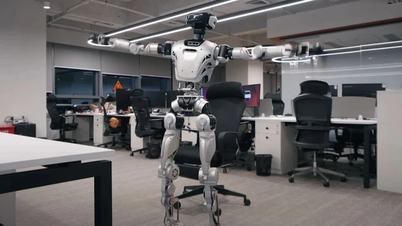 |
Researchers are getting even closer to realistic holograms. (Photo: Andrew Brookes) |
Researchers have invented a device small enough to fit into a regular pair of glasses and that could solve a long-standing tradeoff in holographic displays – resulting in the most realistic holographic images ever.
Holograms are typically created using projection devices called spatial light modulators (SLMs). Light emitted through the device changes the shape of light waves at a specific distance, creating a visible surface.
But because SLMs are made from liquid crystal/silicon (LCoS) display technology, current holographic technology is suited to a narrow field of view like a flat panel display. The viewer must be placed within a narrow field of view – anywhere outside that and the light will refract too much, making it invisible.
The angle can be widened to make the image sharper, but fidelity is lost because current LCoS technology does not have the number of pixels available to maintain the image over a wider field. This means that the hologram tends to be either small and clear or large and diffuse, sometimes disappearing completely if the viewer looks far enough away from the angle at which it is visible.
Felix Heide, assistant professor of computer science at Princeton in the US and lead author of the study, explained the importance of perspective. “To get the same experience, you would have to be sitting in front of a movie screen,” he said.
The new technology can be projected onto regular eyeglasses, and they're also small and light enough that wearers don't need tools like bulky VR headsets.
The discovery would also make applications that use holograms – such as in VR and AR displays – more popular, as the display technology could be easier to use, lighter and ultra-thin.
The Princeton team's key innovation was to create a second optical element that works with the SLM, filtering its output to expand the field of view while preserving detail and stability in the hologram with much less degradation of image quality.


![[Photo] Party and State leaders attend the special art program "You are Ho Chi Minh"](https://vphoto.vietnam.vn/thumb/1200x675/vietnam/resource/IMAGE/2025/5/18/6895913f94fd4c51aa4564ab14c3f250)

![[Photo] Ready for the top competitions of Vietnamese table tennis](https://vphoto.vietnam.vn/thumb/1200x675/vietnam/resource/IMAGE/2025/5/18/9c547c497c5a4ade8f98c8e7d44f5a41)
![[Photo] Many young people patiently lined up under the hot sun to receive a special supplement from Nhan Dan Newspaper.](https://vphoto.vietnam.vn/thumb/1200x675/vietnam/resource/IMAGE/2025/5/18/6f19d322f9364f0ebb6fbfe9377842d3)




























































































Comment (0)